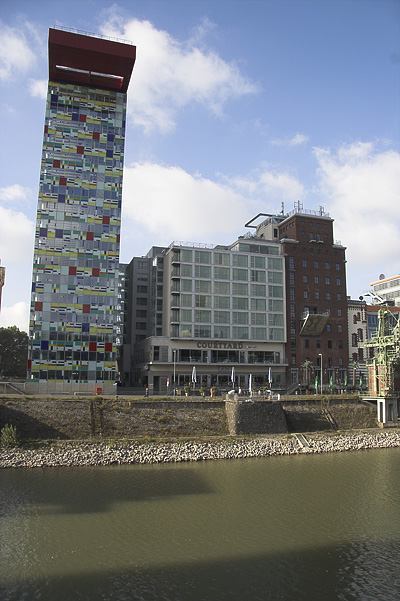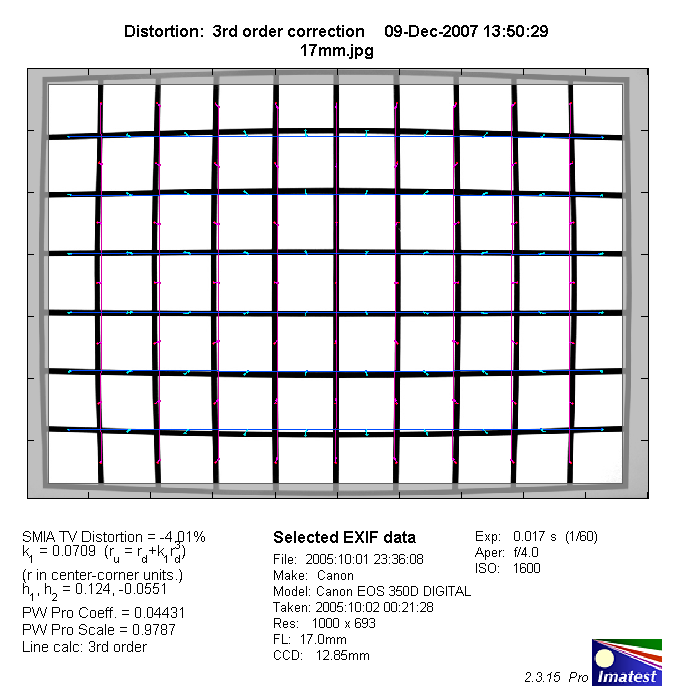|
Canon EF-S 17-85mm f/4-5.6 USM IS - Review / Test Report - Analysis |
|
Lens Reviews -
Canon EOS (APS-C)
|
|
Page 2 of 3

Distortion
The lens broke a new record here - at 17mm it shows the most pronounced barrel distortion
of all (supposedly) corrected lenses tested to date and that's by quite a margin. As you
may observe in the sample shot below this is not only theory ...

Typical for all zoom lenses the barrel distortion changes to pincushion distortion
when zooming towards the long end of the zoom range. At about 24mm both forces even
out technically though there is still some wavy-like distortion left here. At 50mm and
85mm the level of pincushion distortion remains relatively slight so for most of the
zoom range the performance is actually pretty decent.
|
Move the mouse cursor over the focal length text marks below to observe the respective distortions
|
| 17mm |
24mm |
50mm |
85mm |
|

|
The chart above has a real-world size of about 120x80cm or 60x the focal length.
Expect higher distortion levels towards closer focus distances.
Vignetting
So far most of the tested lenses were full-frame variants. APS-C DSLRs such as
the EOS 350D can take advantage of the sweet spot of the lens here usually
resulting in pretty decent vignetting figures. However, the EF-S 17-85mm is a
native APS-C lens with a reduced image circle so it is not surprising that
vignetting is far more pronounced exceeding 1.3EV at 17mm @ f/4 and 0.7EV
at 85mm @ f/5.6. As usual stopping down a little helps to reduce the problem
significantly.

MTF (resolution)
The lens produced a relatively decent performance in the lab but there're clearly
some flaws here. Throughout the zoom range the center performance is generally great
approaching the resolution limits of the EOS 350D (8 MP). The corners at about 70% off the
center can be considered as good. Due to the reduced image circle
a closer look at the extreme corners at about 90% off the center revealed some
problems. At 17mm these extreme corners showed only an okayish quality and
stopping down did not really improve the issue. At 24mm the extreme corners
recover towards medium apertures.
The 1st sample of the lens suffered from a centering defect and a test of a 2nd sample
did produce better results specifically regarding the center performance and the border
performance towards the tele end.
Please note that the MTF results are not directly comparable across the different systems!
Below is a simplified summary of the formal findings. The chart shows line widths per picture height (LW/PH) which can be taken as a measure for sharpness.
If you want to know more about the MTF50 figures you may check out the corresponding Imatest Explanations
Chromatic Aberrations (CAs)
Chromatic aberrations (color shadows at harsh contrast transitions) can be a significant problem
from 17mm to 50mm where the average CA pixel width at the image corners can exceed 1.4 pixels.
Interestingly the 2nd tested sample of the lens performed better here specifically at 17mm.
At 85mm CAs are generally a non-issue.

|